
From Ukraine peace plans to Kazakh uranium—all that and more in our new nuclear digest
Our November Nuclear Digest by Bellona’s Environmental Transparency Center is out now. Here’s a quick taste of just three nuclear issues arising in U...
News
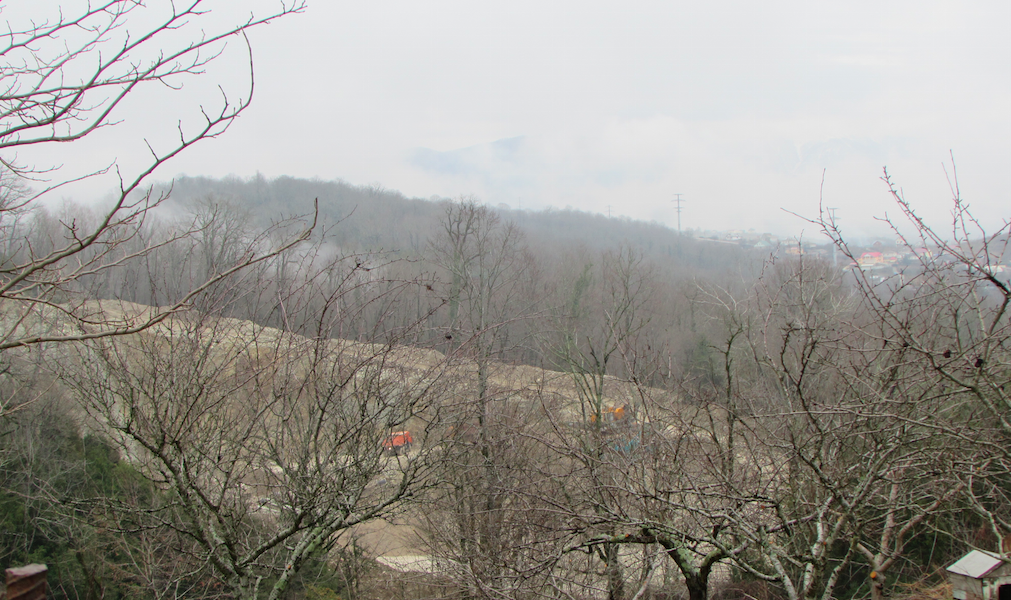
Publish date: January 30, 2014
News
NEAR KLEBOROB, Russia – About 25 kilometers north of the polished, banner-lined Olympic boulevards of Sochi and up into the mountains, the pavement begins to peter out, progressing from bumpy islands of axle-grinding asphalt to sloppy mud track on this drizzly day.
These grimy tractor paths that suck at your tires like quicksand and spew grey gelatinous clay against your fenders are your only way north or south if you don’t have permission to pass along the autobahn-like new highway connecting the Adler area of Sochi – where the Olympic skating venues are located – with the Alpine ski resort of Krasnaya Polyana.
Between the two points, and invisible from the new highway, are literal mountains of trash and illegal quarries slashed into the Sochi National Park that served to produce concrete for Olympic venues, and which are still in use for yet more construction – of what, no one is quite sure.
Andrei Kunin and his wife Tatyana live at the end of one of these muddy gulches in the village of Kleborob. Two years ago, they were promised that the road to the house they have lived in for 30 years would finally be paved.
Their home, which is a sort of farm with goats, a cow and chickens milling about behind a rusty wire fence and whose territory is patrolled by three fierce looking but friendly German Shepherds, sits on a vertiginous slope on the mountain side. Just the view from their yard makes one feels as if the whole establishment might take flight into the valley bellow.
Or what used to be the valley below.
What was once verdant hillsides and forest has now been chiseled into grey dust by a massive quarry beginning next to their property and culminating in a smoggy bustle of backhoes and bulldozers busting rock out of the mountain face and flatlands below.

The paved road that was promised to Tatyana and Andrei by various officials was meant as payback for the inconvenience and eyesore of what was meant to be a small gravel-producing outfit that would have been largely out of sight and out of mind.
On dry days, however, a chalky sandstorm follows eddies of wind up the hillside and covers their foliage, their yard and their house with thick powder, smothering most that is dear to them in what used to be their little forest hide-away.
Visitors pressure Andrei to keep his mouth shut
Sitting in their kitchen, with a north facing view of the stripped granite slopes that plunge downward, Andrei and Tatyana tell me that representatives of ministries and oversight agencies so numerous came to visit them and cajole them into abiding the quarry that they lost track of whom they even talked to.
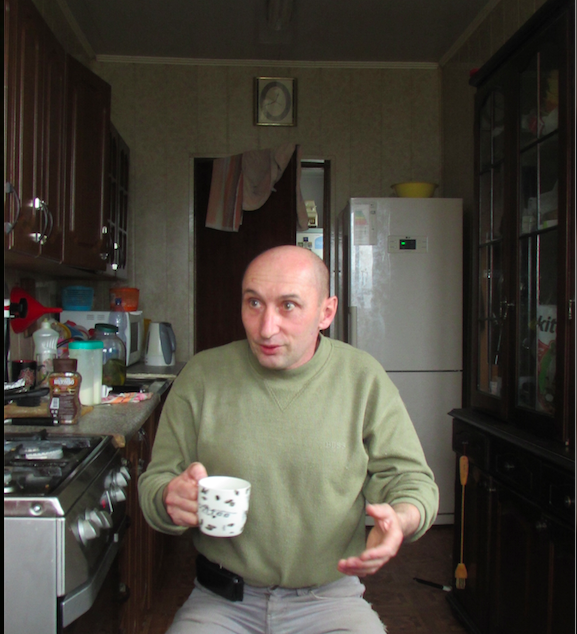
Who makes the rules and who makes the quarries?
Like so many things surrounding these Olympics, their initial build-out by official state contractor Olympstroi, and the greedy, land-ravaging companies that have followed in their footsteps, it is often unclear who is screwing you.
“First there were representatives of the Regional Governor’s office, then the Russian Ministry for Natural Resource Oversight, then the Federal Service for Environmental, Technological and Nuclear Oversight,” said Andrei in his kitchen, serving coffee and homemade wine as he wrinkled his brow trying to recall the profusion visitors who had trekked to his farm to pressure his consent for the quarry.
The visitors began to get hostile, asking him what right he though he had to his home.
“Excuse me,” he told them, “but I’ve had this house since before the quarry,” and he further explained he had the property deed and sheaves of other documents necessary in Russia’s world of red tape to establish ownership.
The strong-arming over the paperwork fell in the middle of Putin’s last campaign for his third term in office, when the soon-to-be president held one of his famous call-in television shows to answer questions from the general public. Andrei and his neighbors phoned in.
Whether the call was taken or not, Andrei did not say. But someone was listening. Two days later, representatives from the regional offices of the Russian Ministry for Natural Resource Oversight, or Rospridodnadzor, showed up at his farm and presented him with documents relative to the so-called Pervomaisky Quarry of the Khosta Distric.
But, Andrei’s farm – and quarry– is in the Adler District.
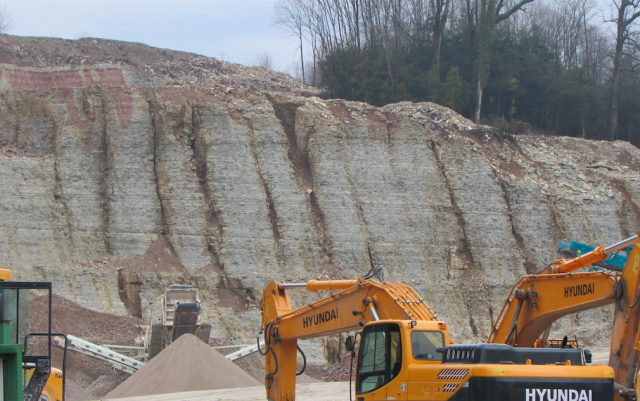
Again, he would not sign off on the permission documents.
“Guys, I said, if your documents are in order, then why do you have the Khosta district on your sign?” said Andrei recounting the tête–à–tête. “These just don’t correspond to reality.”
Finally a call came in from the Krasnodar Regional Administration, a friendly heads up to let Andrei know that his effort were futile.
“My question was over the legality of this – might someone care to examine it?” he told me. But it was too late. “They called me from Krasnodar to say, you see Andrei, it’s all useless.”
Then the FSB, the successor organization to the KGB, got involved. And that was the end of it.
Andrei heard that the land where the quarry eventually exploded was leased for 49 years to what he said was the Moscow Nanogeology Institute, which supposedly had interests in conducting studies on the land. When I tried to look up the institute on the Web in Russian and English, neither Google nor Yandex, the Russian search engine, returned any results.
In Andrei and Tatyana’s recounting, though, no studies were ever done. The heavy machinery rolled in and began belching dust and a crushing din into the once silent valley. The water supply began erratic. The heavy trucks that slogged and careened up and down the hills made the road conditions worse.

One last shred of law that Andrei and Tatyana hoped would work in their favor is that the quarry should have been built at least 500 meters from their property. But the grimy granite drop-off chewed into the mountainside is no more than 20 or 30 meters from their front gate.
According to Vladimir Kimaev, who works with EWNC, these sorts of environmentally devastating projects are possible thanks to local legislative sleight of hand.
He told me in an interview that Olympic and related construction has taken place on at least 28 nationally protected nature preserves and national parks. This can be done because the Krasdnodar Regional government backdates privatization of protected territories under the pretext of transferring them from regional to federal hands.
“The grounds look plausible, but the methods are criminal,” he said. In order for protected lands to be transferred from regional to federal jurisdiction public hearings must be held, he said. Of a handful of such hearings that have actually taken place, said Kimaev, the local population has been overwhelmingly opposed to green lighting the pre-arranged federal land grabs, but their opinion has been brushed under the carpet.
The government promised it would be ‘okay’
Promises that the land in the mountains surrounding Sochi would be preserved flowed from then-President Dmitry Medvedev, who visited the region several times after Sochi’s bid for the 2014 Winter Olympics was given the nod by the International Olympic Committee (IOC) in 2008.
“I saw Medvedev right there on TV and he promised everything would be okay,” Tatyana said.
But the promises were broken.
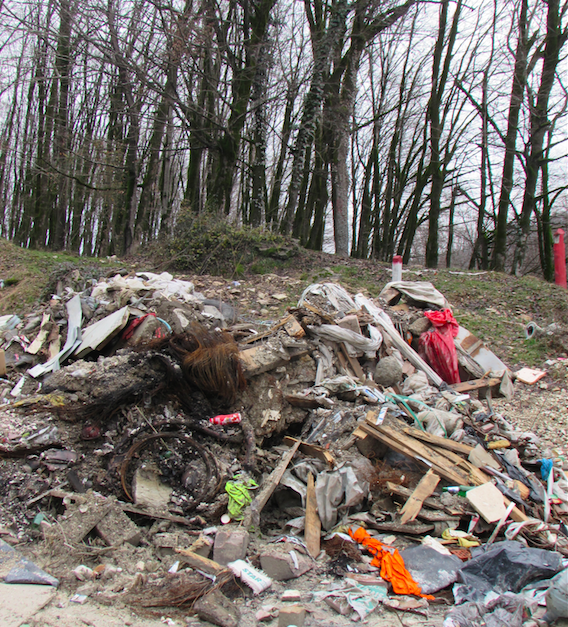
As has been the case in so many circumstances surrounding preparations for the Olympics, Russian environmental law was rewritten to accommodate just such enormous abominations as have been dredged out of the Sochi National Park.
One felled tree resonates in the sound of ruin
The crater punched in the ground by the meteor of the Olympics has rid the area of much of its wildlife and threatens precious plant and tree species.
The Kunins’ home was home because it was surrounded by wildlife, fishable trout streams, bears, rabbits, birds, and the ever more precious and delicate boxwood trees that are native to the region.
So precious is the species of tree that it is listed in the Russian government’s so-called “Red Book” of protected and endangered plant and animal life. A boxwood tree of more than five meters in height, because they are so slow, is over a century old.
Now-faded signs hammered on slatternly, tilting posts along the roads through Sochi National Park warn those who pass that disturbing the tress is illegal and punishable by fines.
Roadside dumps
Construction and household waste from other areas around the Sochi area has been brought in by the truckload and dumped around villages like Kleborob and others like Golitsyno.

These are road stops on the way to Akhstyr, another village that hosts a more notorious quarry-turned-landfill – which has recently been a focus of local administrative cleanup efforts because of its near tourist-attraction draw for foreign journalists.
The story of the Akhstyr quarry and dump came to light in November, when the Associated Press reported on it as a violation of the Olympics stated “Zero Waste” policy. The Russian national rail company, which has built a train line between Sochi and Krasnaya Polyana, had been dumping its construction waste at the site.
The news report brought rare commentary from the International Olympic Committee (IOC). It suggested that the Russians conduct an investigation. This resulted in a halt to much of the waste headed for Akhshtyr.
But researchers from the Environmental Watch on the North Caucasus, the only environmental organization involved in documenting Olympic environmental crimes, told me that waste is now just being heaped on the forgotten mountain roadsides leading to the Akhshtryr. The groups has documented some 1,500 unsanctioned waste dumps around Sochi, of which about two dozen are large-scale.
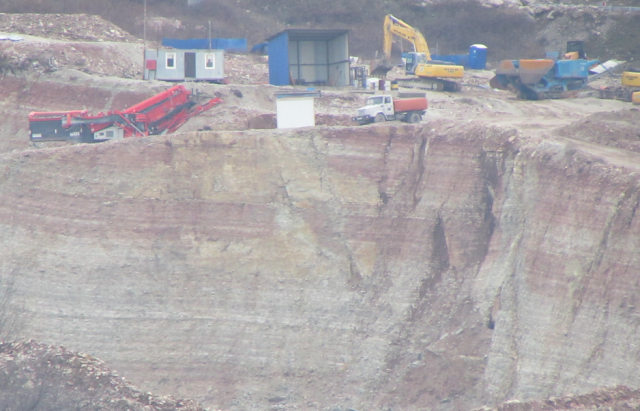
The construction waste at Akhshtyr is a worry to EWNC, who told me that it is a danger to the waters of the Mzymta River, the source of some 80 percent of Sochi’s drinking water.
The dangers posed by construction waste dumped in the mountains north of Adler even emerged on official radars as far back as November, when the Krasnodar Region’s office of Rosprodnazor sent a letter to the local administration saying that it had found “unauthorized dumping of construction waste as well as soil from excavation works.”
Rosprirodnadzor levied a $3000 fine against Russian Railways, which spent upwards of a billion dollars to build the Adler-Krasnaya Polyana line. Rosprirodnadzor has had no comment on the issue since.
The road between Galitsino and the village of Kamenka, which also hosts a quarry in the Adler district, only seems to be adding to worries of waste contamination of water.
Living within two kilometers of these landfills and waste dumps, Konstantin Tsybko, chairman of the Pan-Russian Nature Conservation Society told me in an earlier interview, is “impossible.”
Groaning piles of junk dumped at roadside, evidently from dump trucks or bulldozers, reveal rubber, plastics, chunks of cement, soil, discarded wooden planks and house frames and railroad ties.

EWNC’s Kimaev told me that the sheer breadth of construction waste and Olympic construction in general has led to what he calls the “urbanization of the Mymta River.”
In material he has published on EWNC’s website, he says that the self-regulating conditions of the river have been interrupted.
“This permanent technogenic interference is continuous and will get worse,” he wrote as part of a report that the EWNC is compiling on the effects of the Olympic build on the Black Sea environment. The further pollution of the river “will lead to considerable degradation of the river as a source of freshwater and recreation, will impact unique biota and disturb the stability of a wide natural complex uniting several important elements of the local ecosystem.”
Indeed, what this has amounted to is a river clogged with a stew of construction grime that was long ago abandoned for swimming and is causing havoc with the local water supply.
Irina Gordienko, a reporter with Russia’s famously and fiercely independent Novaya Gazeta, who is covering environmental dangers surrounding the Sochi Olympics told me in late December that “the Mzymta River is dead.”
“Officials have said the river will return to normal within 10 years, but that is clearly not the case,” she said.
Even though leading partners in Olympic construction have committed to a United Nations Environmental Program (UNEP) restoration project for the Mzymta River basin, Gordienko is not convinced these Russian structures will follow through.
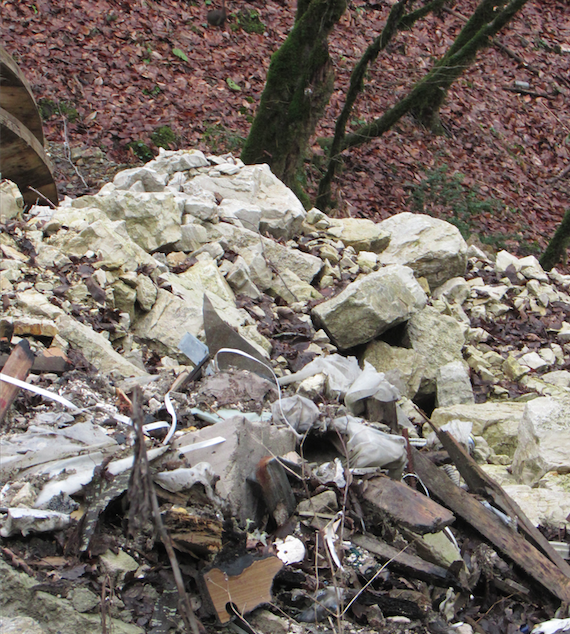
Kimaev shares the sentiment, and cited that the construction waste that is making its way to the river has caused a spate of recent floods, one of which destroyed a pedestrian bridge near Akhshtyr in September.There are no restoration projects underway for the river, said Kimaev, and even if there were, it would be unclear just where to start.
Loosing track of seasons
Back in Kleborob, since the quarry has gone into operation full swing, it has produced distinct seasonal changes on the Kunins’ land, felt most acutely by Tatyana.
Yearly she awaits the appearance of mushrooms in a grove under a tree on their property. It was a particular tree where she knew she would find them every year. But tor the past two years they have failed to appear as expected.
“At first I couldn’t even go there,” Tatyana said. “I just kept crying.”
The mushrooms, the yearly harvesting of them, the pickling of them, plucking them and putting them in buckets, the stewing and sautéing of them, the production of any and all edible products from them, and, most of all, the languid long afternoons spent hunting them, is a tradition as old as Russia itself, and an obsession not quickly understood by the Western eye.

Where anyone west of Estonia sees a ground fungus, Russian enthusiasts see dozens of different varieties from meters away and know what each is good for, how each tastes, and thereby nourishes a part of his or her own national identity.
The loss of Tatyana’s mushroom field is thus a loss much greater than anything that can be compensated by UNEP reclamation project, promises from the regional administration, or even the passage of time. It is the loss of her connection to nature, to the land that is a part of her, the fertile part of her heart.
“It’s just horrible what they have done,” said Tatyana. “Just horrible. It’s a nightmare.”
This is the sixth in a series of articles by Bellona on the Sochi Olympics.

Our November Nuclear Digest by Bellona’s Environmental Transparency Center is out now. Here’s a quick taste of just three nuclear issues arising in U...

For three years now, Bellona has continued its work in exile from Vilnius, sustaining and expanding its analysis despite war, repression, and the collapse of international cooperation with Russia in the environmental and nuclear fields

The Board of the Bellona Foundation has appointed former Minister of Climate and the Environment Sveinung Rotevatn as Managing Director of Bellona No...

Økokrim, Norway’s authority for investigating and prosecuting economic and environmental crime, has imposed a record fine on Equinor following a comp...